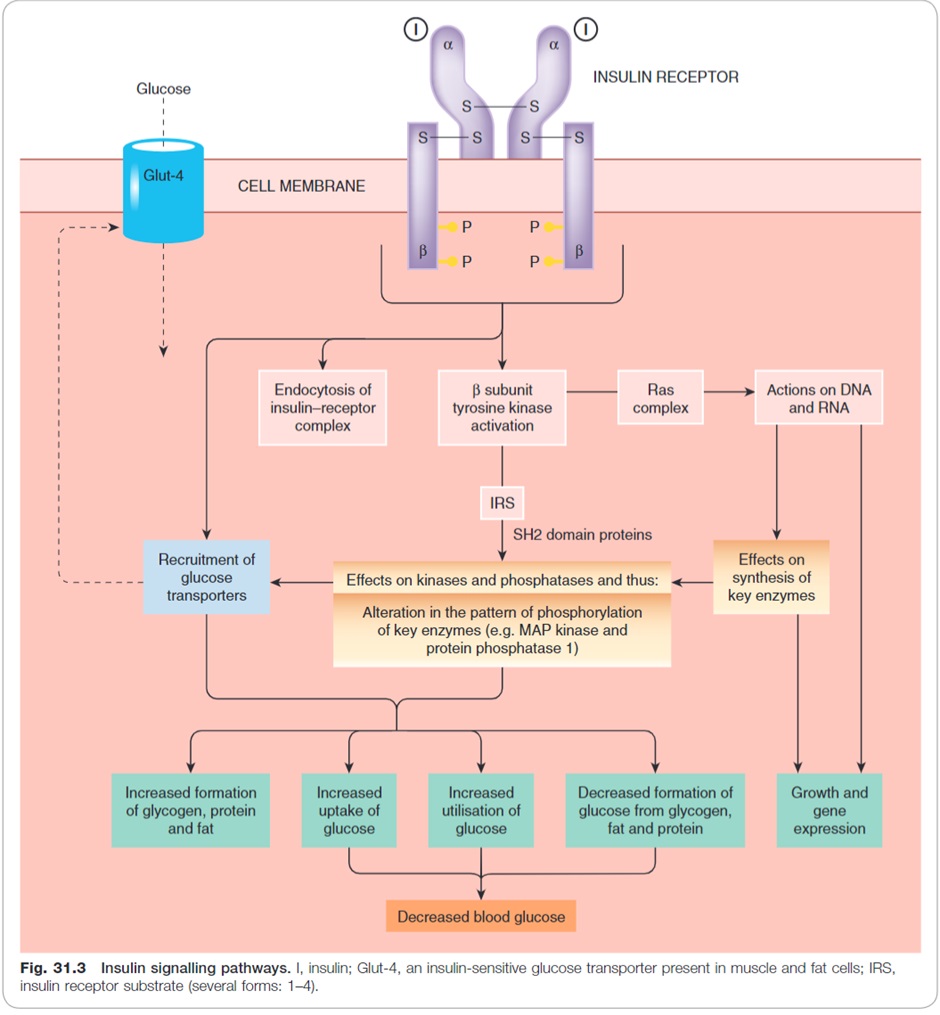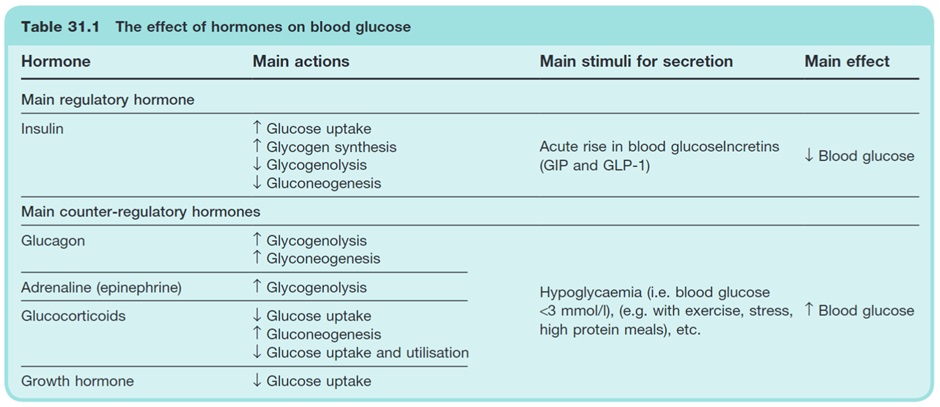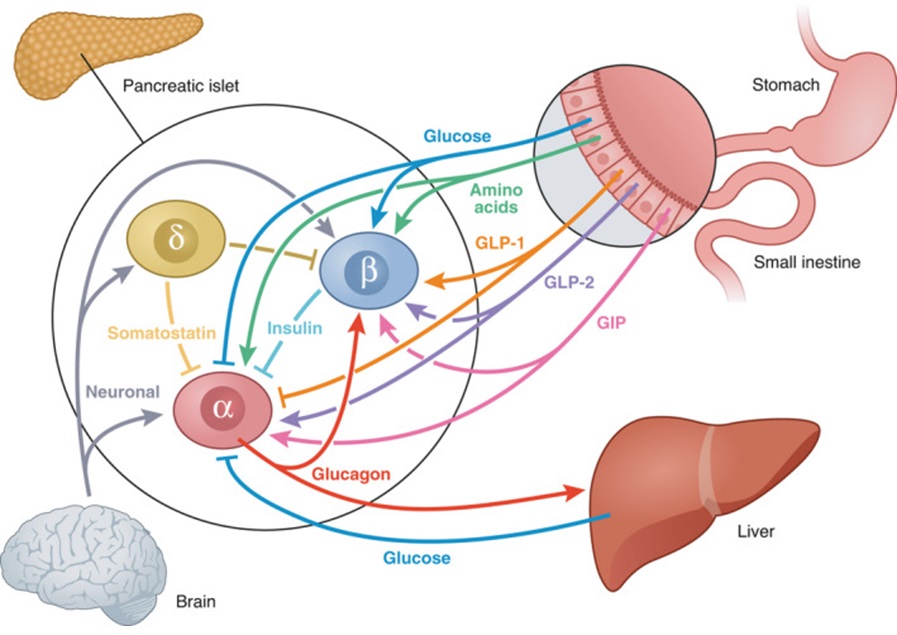6.1 Glucose Homeostasis
Learning Outcomes
Be able to:
-
Describe the physiological role of insulin, glucagon and other counter regulatory hormones in glucose homeostasis.
Introduction to Glucose Homeostasis
The regulation of blood glucose levels is complex. The body regulates blood glucose levels to balance having enough cellular energy available for cells to function against having too much blood glucose for too long. The body tries to regulate blood glucose somewhere between 4.0 and 7.8mmol/L. Blood glucose levels below 4.0mmol/L causes hypoglycemia, which is a potentially life threatening state. Conversely, sustained hyperglycaemia damages small and large blood vessels and can lead to retinopathy, nephropathy and neuropathy. We will now discuss the two major organs involved in the regulation of blood glucose levels, the pancreas and liver.
The pancreas
The pancreas performs a variety of exocrine and endocrine functions. This week we will focus on the endocrine function of the pancreas, which involves the regulation of blood glucose levels. Insulin and glucagon are both peptide hormones produced by cells found in the islets of Langerhans in the pancreas. Insulin is produced in the beta cells while glucagon is produced in the alpha cells. Locate the depiction of these cells using the image below.
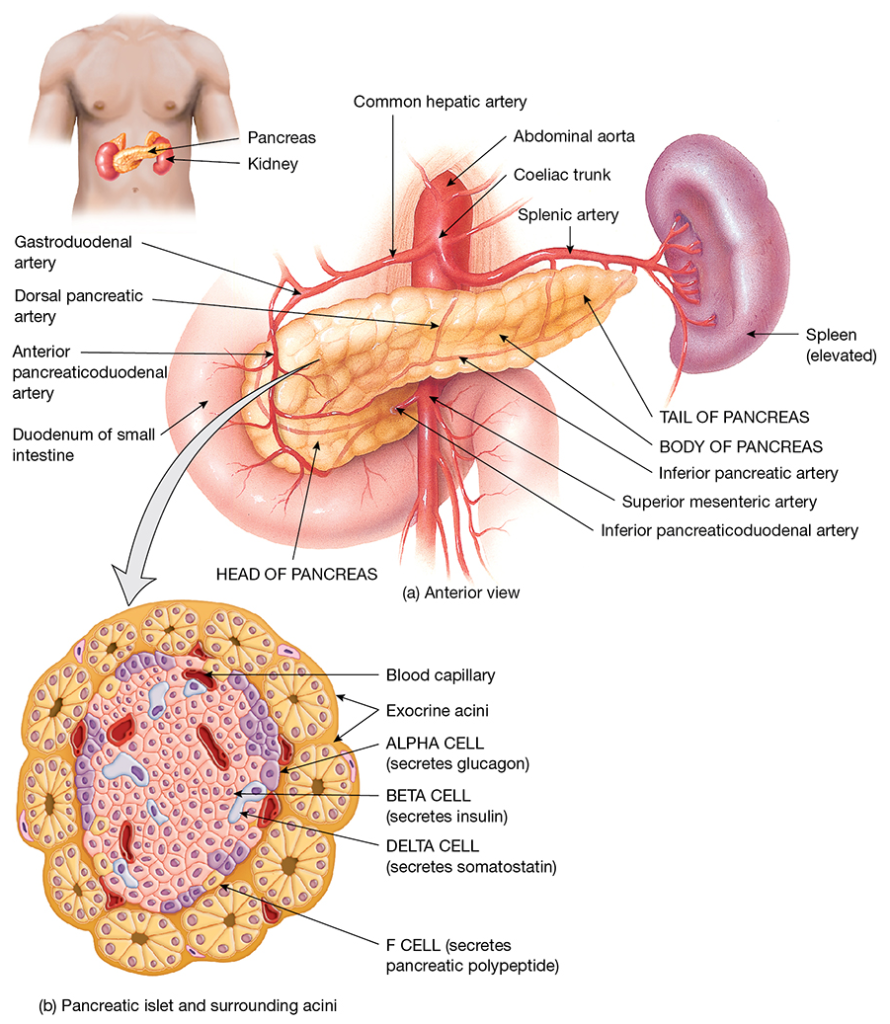
Insulin and glucagon have opposing effects on blood glucose levels and are released in response to differing physiological states. Insulin LOWERS blood glucose in the fed state while glucagon RAISES blood glucose levels in the fasting state.
The liver
After meals, glucose is stored as glycogen in the liver. During fasting periods, glucose is released from glycogen and made available to other tissues. The function of the liver is influenced by a number of hormones, including insulin and counter regulatory hormones. We will discuss these hormones next.
📺Watch the following video on the role of the liver in regulating blood glucose levels. (2:02 min.)
Before we discuss insulin and counter regulatory hormones like glucagon, review the image below to solidify your understanding of the role of the pancreas and liver in glucose homeostasis.
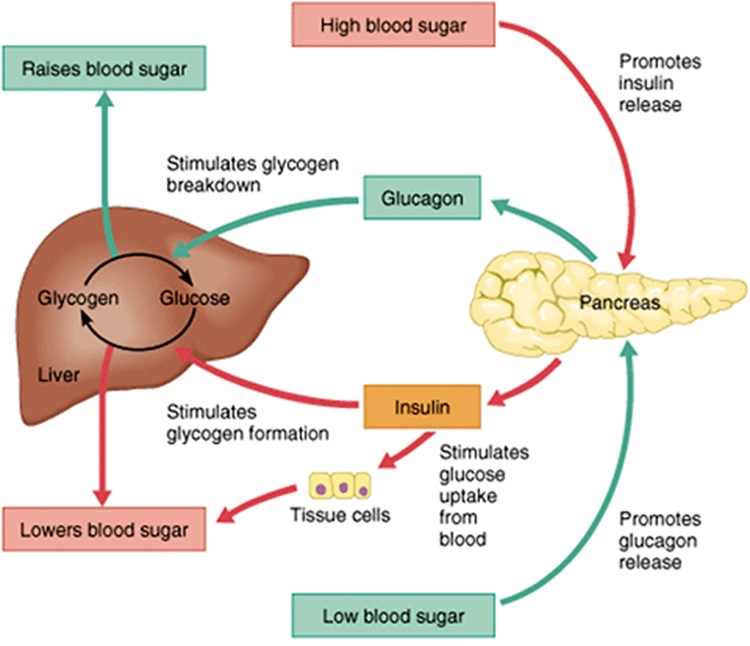
Insulin, Glucagon and the Other Counter Regulatory Hormones
Insulin
Insulin is released in the fed state in response to elevated blood glucose levels. When insulin binds to the insulin receptor (a tyrosine kinase receptor) on the cell membrane it triggers a variety of important cellular processes including:
- Increased expression of glucose transporters (GLUT4) on the cell wall which allow glucose to move across the cell membrane into muscle and adipose cells.
- Increase energy storage:
- Increased glycogen synthesis (glycogenesis)
- Fat synthesis (lipogenesis)
- Inhibit lipid and protein breakdown (lipolysis and proteolysis)
- Inhibit ketogenesis:
- Inhibit free fatty acid formation (occurs during lipolysis)
- Prevent free fatty acids entering mitochondria where they can be metabolised to ketoacids
- Inhibit glucagon production in alpha cells.
Check your understanding:
COMMONWEALTH OF AUSTRALIA Copyright Regulations 1969 WARNING
This material has been reproduced and communicated to you by or on behalf of James Cook University in accordance with section 113P of the Copyright Act 1969 (Act).
The material in this communication may be subject to copyright under the Act. Any further reproduction or communication of this material by you may be the subject of copyright protection under the Act. Do not remove this notice.

